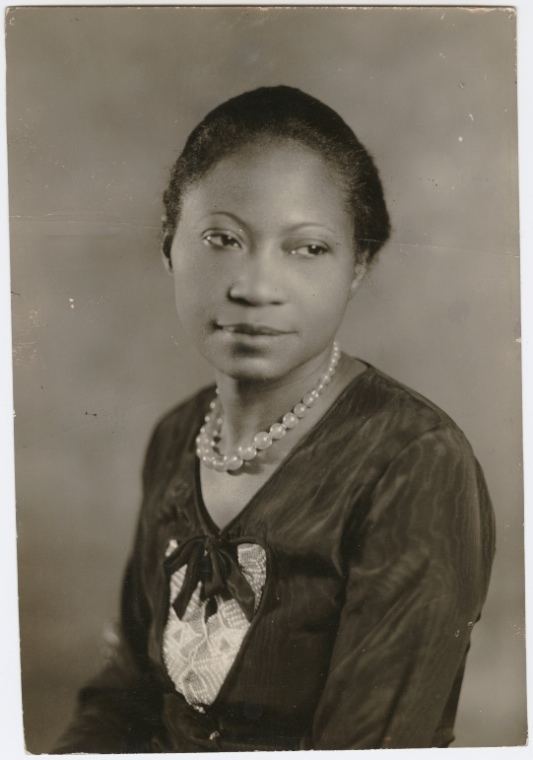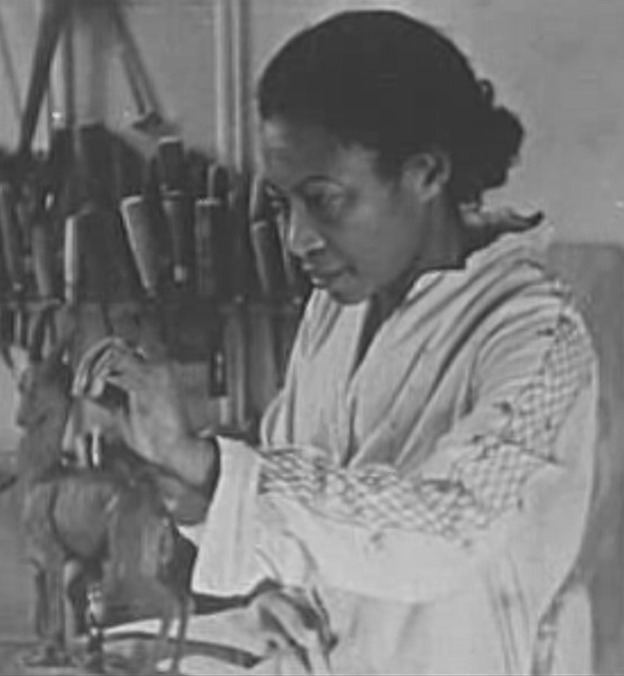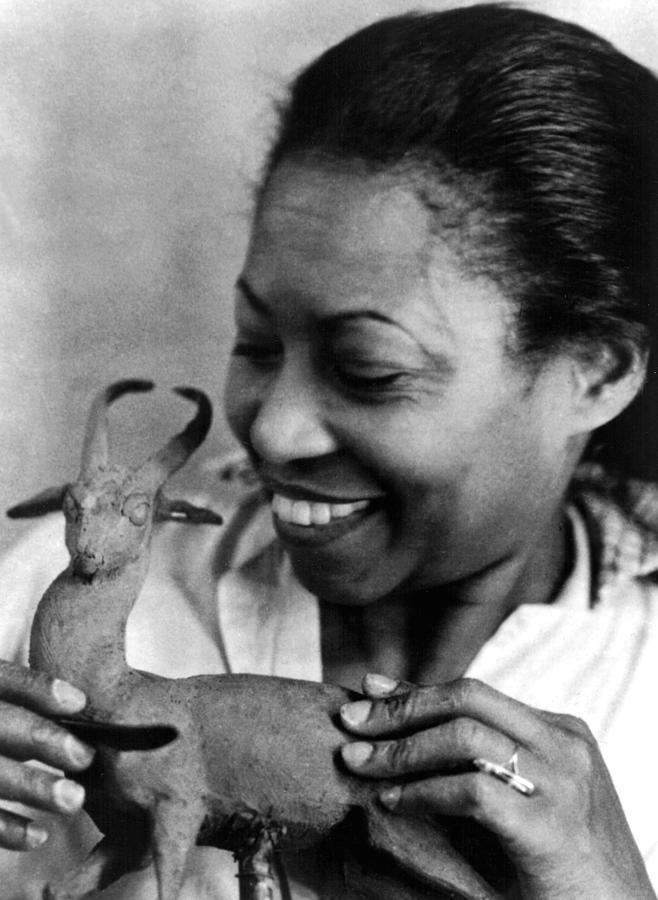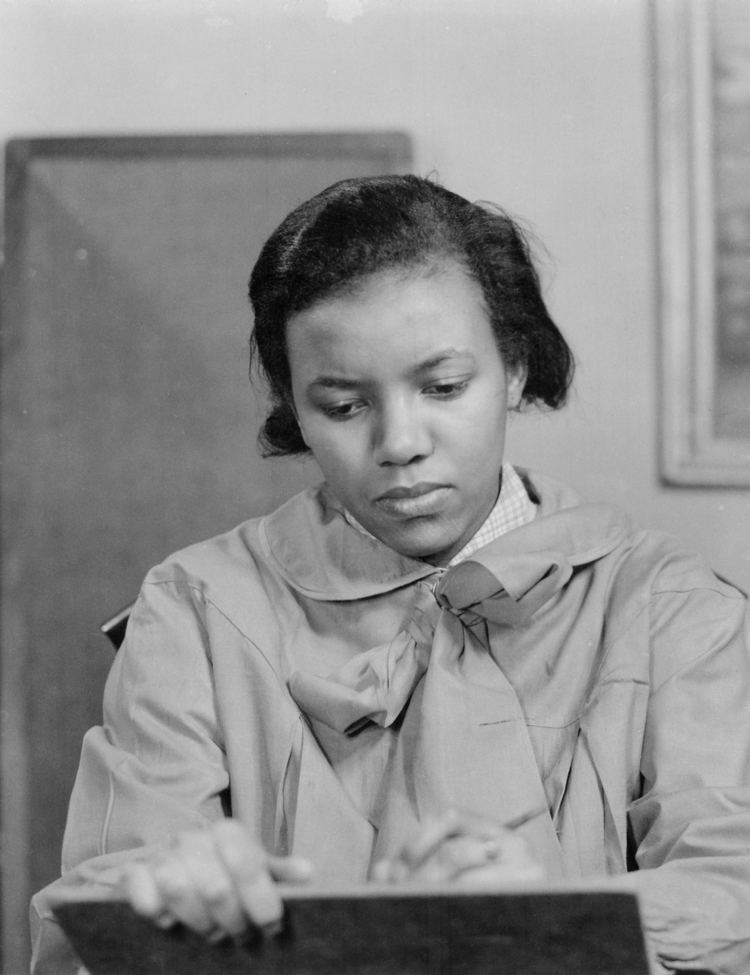Nationality American (USA) Role Sculptor | Name Augusta Savage Known for Sculpture Children Irene Connie Moore | |
 | ||
Full Name Augusta Christine Fells Born February 29, 1892 ( 1892-02-29 ) Green Cove Springs Notable work GaminW.E.B DuboisLift Every Voice and Sing Died March 26, 1962, New York, United States Parents Edward Fells, Cornelia Murphy Fells Similar People Jacob Lawrence, Charles Alston, Romare Bearden, Norman Lewis, Faith Ringgold | ||
Augusta savage african american sculptor 1892 1962
Augusta Savage, born Augusta Christine Fells (February 29, 1892 – March 27, 1962) was an African-American sculptor associated with the Harlem Renaissance. She was also a teacher and her studio was important to the careers of a rising generation of artists who would become nationally known. She worked for equal rights for African Americans in the arts.
Contents
- Augusta savage african american sculptor 1892 1962
- Augusta savage
- Early life and work
- Later work
- Legacy
- Works
- References

Augusta savage
Early life and work

Augusta Fells (Savage) was born in Green Cove Springs (near Jacksonville), Florida, on February 29, 1892, to Edward Fells, a Methodist minister, and Cornelia Murphy. She began making clay figures as a child, mostly small animals, but her father was a poor Methodist minister who strongly opposed his daughter’s early interest in art. "My father licked me four or five times a week,” Savage once recalled, “and almost whipped all the art out of me.” This was because at that time, he believed her sculpture to be a sinful practice, based upon his interpretation of the "graven images" portion of the Bible. She persevered, and the principal of her new high school in West Palm Beach, where her family relocated in 1915, encouraged her talent and allowed her to teach a clay modeling class. This began a lifelong commitment to teaching as well as to art.

In 1907, Augusta Fells married John T. Moore. Her only child, Irene Connie Moore, was born the next year. John died shortly thereafter. In 1915, she married James Savage; she kept the name of Savage throughout her life. After their divorce in the early 1920s, Augusta Savage moved back to West Palm Beach.

Augusta Savage continued to model clay, and in 1919 was granted a booth at the Palm Beach County Fair, where she was awarded a $25 prize and ribbon for most original exhibit. Following this success, she sought commissions for work in Jacksonville, Florida, before departing for New York City in 1921. She arrived with a letter of recommendation from Palm Beach County Fair official, George Graham Currie, for sculptor Solon Borglum and $4.60. Borglum declined to take her as a student, but encouraged her to apply to Cooper Union in New York City, where she was admitted in October, 1921. She was selected before 142 other women on the waiting list. Her talent and ability so impressed the Cooper Union Advisory Council that she was awarded additional funds for room and board when she lost the financial support of her job as an apartment caretaker. From 1921 through 1923, she studied under sculptor George Brewster. She completed the four-year course of study degree in three years.
In 1923, Savage applied for a summer art program sponsored by the French government; although being more than qualified, she was turned down by the international judging committee, solely because she was black. Savage was deeply upset, and questioned the committee, beginning the first of many public fights for equal rights in her life. The incident got press coverage on both sides of the Atlantic, and eventually the sole supportive committee member, sculptor Hermon Atkins MacNeil—who at one time had shared a studio with Henry Ossawa Tanner—invited her to study with him. She later cited him as one of her teachers. After completing studies at Cooper Union, Savage worked in Manhattan steam laundries to support herself and her family. Her father had been paralyzed by a stroke, and the family's home destroyed by a hurricane. Her family from Florida moved into her small West 137th Street apartment. During this time she obtained her first commission, for a bust of W. E. B. Du Bois for the Harlem Library. Her outstanding sculpture brought more commissions, including one for a bust of Marcus Garvey. Her bust of William Pickens, Sr., a key figure in the NAACP, earned praise for depicting an African-American in a more humane, neutral way as opposed to stereotypes of the time, as did many of her works.
In 1923, Savage married Robert Lincoln Poston, a protégé of Garvey. Poston died of pneumonia aboard a ship while returning from Liberia as part of a Universal Negro Improvement Association and African Communities League delegation in 1924.
In 1925, Savage won a scholarship to the Royal Academy of Fine Arts in Rome; the scholarship covered only tuition, however, and she was not able to raise money for travel and living expenses. Thus she was unable to attend. In the 1920s writer and eccentric Joe Gould became infatuated with Savage. He wrote her "endless letters", "telephoned her constantly", and wanted to marry her. Eventually this turned to harassment.
Knowledge of Savage's talent and struggles became widespread in the African-American community; fund-raising parties were held in Harlem and Greenwich Village, and African-American women's groups and teachers from Florida A&M all sent her money for studies abroad. In 1929, with assistance as well from the Julius Rosenwald Fund, Savage enrolled and attended the Académie de la Grande Chaumière, a leading Paris art school. In Paris, she studied with the sculptor Charles Despiau. She exhibited and won awards in two Salons and one Exposition. She toured France, Belgium, and Germany, researching sculpture in cathedrals and museums.
Later work
Savage returned to the United States in 1931, energized from her studies and achievements. The Great Depression had almost stopped art sales. She pushed on, and in 1934 became the first African-American artist to be elected to the National Association of Women Painters and Sculptors. She then launched the Savage Studio of Arts and Crafts, located in a basement on West 143rd Street in Harlem. She opened her studio to anyone who wanted to paint, draw, or sculpt. Her many young students would include the future nationally known artists Jacob Lawrence, Norman Lewis, and Gwendolyn Knight. Another student was the sociologist Kenneth B. Clark, whose later research contributed to the 1954 Supreme Court decision in Brown v. Board of Education that ruled school segregation unconstitutional. Her school evolved into the Harlem Community Art Center; 1500 people of all ages and abilities participated in her workshops, learning from her multi-cultural staff, and showing work around New York City. Funds from the Works Progress Administration helped, but old struggles of discrimination were revived between Savage and WPA officials who objected to her having a leadership role.
Savage received a commission from the 1939 New York World's Fair; she created Lift Every Voice and Sing (also known as "The Harp"), inspired by the song by James Weldon and Rosamond Johnson. The 16-foot-tall plaster sculpture was the most popular and most photographed work at the fair; small metal souvenir copies were sold, and many postcards of the piece were purchased. The work reinterpreted the musical instrument to feature 12 singing African-American youth in graduated heights as its strings, with the harp's sounding board transformed into an arm and a hand. In the front, a kneeling young man offered music in his hands. Savage did not have funds to have it cast in bronze, or to move and store it. Like other temporary installations, the sculpture was destroyed at the close of the fair.
Savage opened two galleries, whose shows were well attended and well reviewed, but few sales resulted, and the galleries closed. Deeply depressed by the financial struggle, in the 1940s Savage moved to a farm in Saugerties (near Woodstock, New York), where she stayed until 1960. She worked on a mushroom farm, and made little or no effort to talk about or create art. Her few neighbors said that she was always making something with her hands.
Much of her work is in clay or plaster, as she could not often afford bronze. One of her most famous busts is titled Gamin, which is on permanent display at the Smithsonian American Art Museum in Washington, D.C.; a life-sized version is in the collection of the Cleveland Museum of Art. At the time of its creation, Gamin, which is modeled after a Harlem youth, was voted most popular in an exhibition of over 200 works by black artists. Her style can be described as realistic, expressive, and sensitive. Though her art and influence within the art community is documented, the location of much of her work is unknown.
In 1945, Savage retired from the art world. She taught art to children and wrote children's stories before she died. Savage died of cancer on March 26, 1962, in New York City. While she was all but forgotten at the time of her death, Savage is remembered today as a great artist, activist and arts educator, serving as an inspiration to the many that she taught, helped and encouraged.
Legacy
The Augusta Fells Savage Institute of Visual Arts, a Baltimore, Maryland public high school, is named in her honor.
In 2001, her home in Saugerties, New York, was listed on the National Register of Historic Places as the Augusta Savage House and Studio. In 2007 the City of Green Cove Springs, Florida nominated her to be inducted into the Florida Artist Hall of Fame; she was inducted the spring of 2008. Today, at the actual location of her birth there is a Community Center named in her honor.
A biography of Augusta Savage intended for younger readers has been written by author Alan Schroeder. In Her Hands: The Story of Sculptor Augusta Savage was released in September 2009 by Lee and Low, a New York publishing company.
